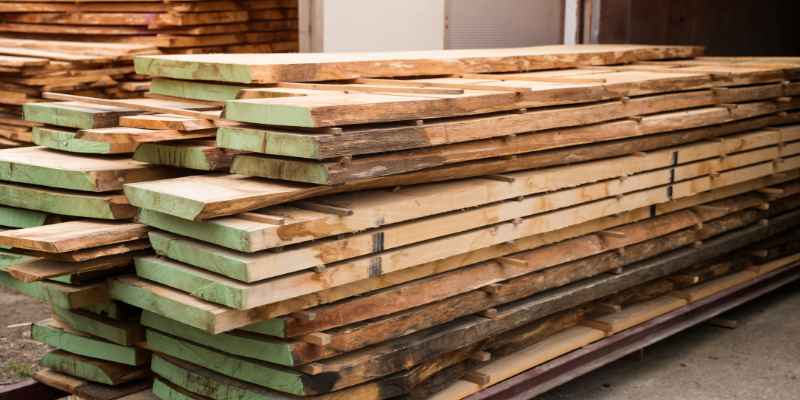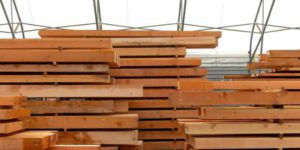Kiln-dried wood is not treated with chemicals, while pressure-treated wood undergoes a preservative treatment. Kiln-dried wood is ideal for furniture and indoor projects, offering durability without chemical treatment.
It is lighter, stronger, and more resistant to decay and insects. On the other hand, pressure-treated wood, despite being more expensive, is recommended for projects requiring protection against decay and insects. Understanding the distinction between these two types of wood is crucial for selecting the appropriate material for your construction needs.
Whether you’re a professional builder or a DIY enthusiast, knowing the benefits of each type of wood will help you achieve long-lasting and structurally sound results for your projects.
Differences
Kiln Dried Vs. Treated Wood
When it comes to kiln-dried wood versus treated wood, it’s important to understand the distinctions between the two. While both types of wood offer benefits, they serve different purposes and have unique properties.
Properties Of Kiln Dried Wood
- Lighter and stronger
- More resistant to decay and insect damage
- Less likely to warp, crack, or shrink
Properties Of Treated Wood
- Treated with a chemical preservative
- Protected from decay and insect damage
- More suitable for outdoor use
Use Cases
Kiln-dried wood is not the same as treated wood. Kiln-dried wood is heated to remove moisture, making it stronger and more resistant to decay and insect damage. Pressure-treated wood, on the other hand, is treated with a chemical preservative to protect it from decay and insects.
Indoor Use
Kiln-dried wood is perfect for indoor projects and furniture as it is less prone to warping, cracking, or shrinking, providing long-lasting durability.
Outdoor Use
Kiln-dried wood is also excellent for outdoor applications since it is less likely to warp in wet conditions, making it ideal for decks, fences, and other outdoor structures.
Longevity
When it comes to choosing wood for your projects, one of the key factors to consider is its longevity. How long will the wood last? Will it withstand the test of time? This is especially important when it comes to outdoor projects, where the wood is exposed to the elements.
How Long Does Kiln Dried Wood Last?
Kiln dried wood is known for its durability and longevity. The kiln drying process removes moisture from the wood, making it more resistant to decay and insect damage. This means that kiln dried wood is less likely to warp, crack, or shrink over time compared to air-dried or green wood.
But how long does kiln dried wood actually last? While there is no specific time frame, kiln dried wood can last for several decades if properly maintained. The exact lifespan will depend on various factors, such as the type of wood, the environment it is used in, and the maintenance practices.
Lifetime Of Treated Wood
When it comes to treated wood, such as pressure-treated wood, the longevity can be extended even further. Pressure-treated wood is treated with a chemical preservative that protects it from decay and insect damage. This treatment adds an extra layer of protection, making the wood last even longer.
So, how long does treated wood last? Generally, pressure-treated wood can last for several decades, with some even lasting up to fifty years or more. However, it’s important to note that the lifespan of treated wood will also depend on factors such as exposure to moisture, sunlight, and regular maintenance.
Overall, both kiln dried wood and treated wood offer enhanced longevity compared to untreated or air-dried wood. Whether you choose kiln dried or treated wood will depend on the specific requirements of your project and your budget. Considering their longevity, it may be worth investing in either option to ensure that your wood projects stand the test of time.

Chemical Treatment
Kiln-dried wood is not the same as treated wood. Kiln-dried wood is heated to remove moisture, making it stronger and more resistant to decay and insects. Treated wood, on the other hand, is treated with a chemical preservative to protect it from decay and insect damage.
Understanding The Chemical Treatment Process
Kiln-dried wood is a popular choice for various woodworking projects due to its strength, durability, and resistance to decay. However, to further enhance its longevity, kiln-dried wood is often subjected to a chemical treatment process. This treatment involves the application of chemical preservatives to protect the wood from potential damage caused by insects, fungi, and other environmental factors. Let’s explore the chemical treatment process and its significance in more detail.
Environmental Impact
The chemical treatment process used on kiln-dried wood raises concerns about its environmental impact. It is important to note that these chemical preservatives are designed to be effective at preventing rot, decay, and termite infestation. However, they can potentially contribute to environmental pollution if not handled and disposed of properly.
Wood treated with chemical preservatives should never be burned or used for cooking to avoid releasing harmful chemicals into the air. It is crucial to follow appropriate disposal methods and regulations to minimize any negative impact on the environment. To ensure your safety and the protection of the environment, it is recommended to consult the guidelines set by your local environmental authorities regarding the handling and disposal of chemically treated wood.
Considering the potential environmental impact, it is always advisable to explore alternative options if you have sustainability concerns. Look for eco-friendly alternatives or opt for naturally durable wood species that require minimal chemical treatment to achieve the desired level of protection.
In conclusion, understanding the chemical treatment process involved in treating kiln-dried wood is essential in making informed decisions for your woodworking projects. While chemical treatment can enhance the wood’s resistance to decay and insect damage, it is crucial to handle and dispose of chemically treated wood responsibly to minimize the environmental impact.
Market Availability
Kiln dried wood and treated wood are essential materials in various construction projects.
Availability Of Kiln Dried Wood
Kiln dried wood is readily available in the market from reputable lumber suppliers.
- Popular for indoor projects and furniture due to its stability
- Commonly found in a selection of hardwoods and softwoods
- Available in standard sizes for different applications
Availability Of Treated Wood
Treated wood is widely accessible for outdoor projects that require durability.
- Found in various types such as pressure-treated and kiln-dried after treatment (KDAT)
- Offers protection from decay and insect damage
- Available in treated lumber yards and home improvement stores
Cost Analysis
When comparing the costs of kiln-dried wood versus treated wood, it is crucial to consider various factors that can impact the overall expenses.
Cost Of Kiln Dried Wood
- Kiln-dried wood is generally more expensive upfront due to the specialized drying process it undergoes.
- However, the initial higher cost is often offset by the superior quality and durability of the wood.
- Long-term savings can be achieved as kiln-dried wood is less likely to warp or degrade over time.
Cost Of Treated Wood
- Treated wood may have a lower upfront cost compared to kiln-dried wood.
- However, ongoing maintenance and potential replacement costs should be factored in due to the treatment’s limitations in preventing decay and insect damage.
- While treated wood may be cheaper initially, it may end up costing more in the long run.

Frequently Asked Questions On Is Kiln Dried Wood Treated
Is Kiln Dried Wood The Same As Treated Wood?
Kiln-dried wood is not the same as treated wood – kiln drying removes moisture, making it stronger, whereas treated wood is preserved with chemicals.
Is Kiln Dried Wood Treated With Chemicals?
Kiln-dried wood is not typically treated with chemicals. It’s heated in a kiln to remove moisture, making it stronger and more decay/pest resistant. On the other hand, pressure-treated wood is chemically treated for protection.
Is Kiln Dried Lumber Good For Outdoor Use?
Kiln dried lumber is good for outdoor use because it’s less prone to warping in wet conditions.
Is There Such A Thing As Kiln Dried Pressure-treated Lumber?
Yes, there is kiln-dried pressure-treated lumber available. It undergoes kiln drying after treatment for durability and stability.
Conclusion
Kiln-dried wood undergoes a moisture removal process, enhancing its durability for various projects. On the other hand, pressure-treated wood is chemically treated to resist decay and insects. Making an informed choice between the two types depends on the project’s specific requirements and budget consideration.


